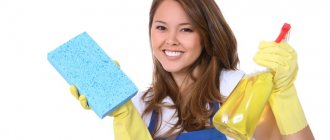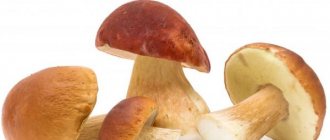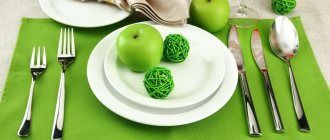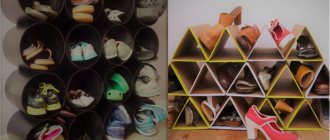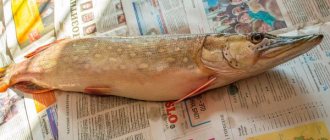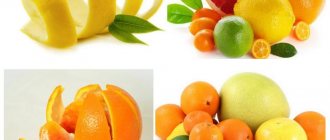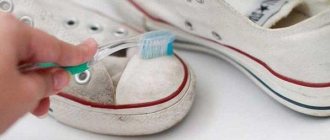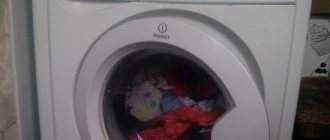A modern self-respecting person should know a number of rules of behavior at the table. This means understanding proper etiquette for holding cutlery, how to arrange it, and what to remember during and after a meal. These skills will help maintain mutual respect and comfort for all people sitting in the room.
Etiquette is a set of historically established rules of human behavior in society.
The language of cutlery and its correct placement
We invite you to dive a little into table etiquette and learn a few simple rules from competent restaurant service visitors in order to look decent at your next festive event. You make different signs for the waiter as you place cutlery on your plate. Such gestures are picked up and taken into account by professional staff.
You make different signs for the waiter as you place cutlery on your plate.
Placement of cutlery during meals
While lunch is not completed, and you want to go away or have a drink, the cutlery is lowered with its handles onto the surface of the tablecloth. This situation indicates that it is too early to remove the plate.
New delicious recipes:
- How to hold a fork correctly, how to eat with a fork and knife
- Cutlery. Story.
- Table setting - how to choose the right dishes and...
What not to do in a restaurant?
There are a number of actions, the performance of which indicates a person’s low cultural level. This primarily applies to events and official receptions. Table etiquette rules prohibit:
- Call the waiter, addressing him on a first name basis.
- Talk about politics, religion, health, finances.
- Communicate loudly, interrupt.
- Use toothpicks. This must be done exclusively in the bathroom.
- Pick up food or cutlery that has fallen on the floor. It's worth asking the waiter for a replacement.
- Use the phone. It's better to turn on silent mode. If the call is extremely important, you can apologize to the interlocutors and warn them.
- Inform about diet, abstinence from alcohol. There is no need to draw attention to yourself in these matters.
- Hurry. Even in the event of severe hunger, it is necessary to wait until food is brought to all people.
- Cut and bite a large piece of bread. Etiquette rules require breaking off small pieces. They are placed into the mouth with their fingers.
- Place the bag on the table or chair. Restaurants usually have special coasters installed. When they are absent, the bag is hung on the back of the chair, the briefcase is placed on the floor.
- Pressing tightly against the table or sitting too far away. Only your hands can be placed on the surface.
Video about what not to do at the table:
It's not tasty!
Sometimes the taste of a dish upsets and spoils the mood of going to a restaurant. To show your dissatisfaction, it is not necessary to make a row and swear. A cultured and educated visitor will give a sign. He will place the cutlery crosswise, inserting the tip of the knife between the tines of the fork. If a restaurant values its reputation, then the staff will ask what exactly they didn’t like. If the assessment is objective, then perhaps they will replace the dish or offer a small treat as a sign of “apology”.
Fork etiquette
In addition to the usual forks intended for main courses, fish and desserts, there are many other varieties that differ in the thickness of the teeth, their number and length:
- fruit (has three teeth, small in size);
- for lobster (two short cloves);
- for the snail (two long, slightly curved teeth);
- to oysters;
- as a component of salad tongs.
Types of forks for various dishes.
They are served only if the guest definitely wants one of the listed dishes.
Using a fork for other purposes is a sign of bad taste.
How to eat food with a fork
There are 3 main ways to hold this item according to etiquette.
- The thumb and middle finger are grasped at the end of the handle, and the index part is located along the object, helping with pressure. In this case, the fork stands on its edge, touching the plate. Often this must be done with dessert, it is soft.
- The same position of the fingers, only in the middle of the object and the teeth “look” down. Then the index finger can better help when pressing and piercing meat and other hard pieces of food.
- The fork is taken like a regular ballpoint pen and positioned so that it is convenient to scoop up the soft part of the meal.
The rules of etiquette include, in particular, the ability to use cutlery correctly.
It usually takes a little practice to master and get used to holding this item correctly. But then this option will become even simpler than the others.
Do not forget that under no circumstances should utensils be placed on the table if you have already used them.
How not to use a fork
It is unacceptable to use other positions in the hand, as well as to make sounds while touching the utensils. The same goes for the knife. If it is inconvenient to hold it in your left hand all the time, then the American version of etiquette allows you to transfer the device to the other hand when the knife is not needed.
Cutting with a knife on the left is considered inappropriate, as it puts others at risk.
Serving features
Table etiquette involves proper table setting. Before arranging cutlery correctly, you should place napkins and a tablecloth on the table. Serving is carried out in the following order:
- The prepared table is wiped with a damp and then a dry cloth.
- Then a tablecloth is placed on it. It should be laid out evenly on the table so that it hangs evenly from opposite ends. It is not allowed to skew the fabric, in which one of its ends will be longer than the previous one. The size of the tablecloth must be such that it does not touch the chairs, but hangs 15 cm from the table. If the existing tablecloth is large, it should be folded so that it complies with the rules described above.
- The placement of cutlery on the table must be correct. All knives should go to the right of the plates, and sets of forks should go to the left. Spoons are placed above the plate. This rule applies to both a teaspoon and a tablespoon.
- Having determined the position of the cutlery, place the napkins. When using cloth napkins, individual for each diner, they are placed directly on the plate, folded in unusual shapes. Before laying out such napkins, they are folded in the shape of swans, figures or fans. It doesn’t matter exactly how the napkins are laid out, but they must be the same for all visitors.
- It is allowed to additionally place a napkin holder with paper napkins on the table for one-time use.
- It is mandatory to provide glasses for water. Other glassware is installed according to the menu.
When placing forks and knives near the plate, they are placed in the reverse order from the order in which the dishes are served. This means that the device located near the hand will be useful first. When serving an appetizer and then fried meat at lunch, place the meat cutlery first closer to the plate, and then the appetizer set.
How to use cutlery
Proper use of cutlery helps visitors correctly consume the served dish and makes the waiters’ work easier. Cutlery can be different; the distinctive parameters of knives and forks make them convenient only for use when eating a specific dish.
General devices
Not knowing how to use cutlery correctly, the visitor leaves the opinion of himself as an ill-mannered person who does not know the rules of etiquette. If we use cutlery correctly, we show respect for the staff and waiters. Common tools are the easiest to use. These are knives and forks intended for eating meat, fish, snacks and salads. When using such devices, it is important to follow the following rules:
- The knife is in the right hand, and the fork is in the left.
- You should hold the knife without placing your index finger on the blade. All fingers should be on the handle.
- When eating meat, pierce a piece with a fork and cut off the necessary part with a knife. When eating salad, hold the fork with the teeth up and use a knife to help place the vegetables on it.
- Snackware should be used exclusively for eating salads and appetizers, cutlery should be used for eating meat, and fish cutlery should be used for fish dishes.
- Food should be consumed in the order in which the cutlery is located near the plate.
- You should never put a knife near your mouth. The teeth of the fork can be completely in the mouth, and the spoon should be licked only if it is for tea, dessert or ice cream. You cannot take a tablespoon completely into your mouth.
- Wine glasses should be held with all fingers by the stem or the main part of the glass. It is considered rude to touch other visitors' glasses or serve someone a glass (even to a lady).
For exotic dishes
Cutlery for exotic dishes is brought according to a pre-agreed menu. These could be lobster knives, lobster scissors, snail tweezers and forks. Given the exotic composition of the dish and unusual cutlery, it is permissible to ask the waiter to demonstrate how to use the tools. In this case, you should not eat the portion cut up by the waiter.
When using tools, remember that the dish is cut exclusively using the tools provided. You should not help with a table knife, a fork, or especially with your hands. These dishes are eaten without bread.
If you don't know what to do with a particular dish or appliance, the most affordable option is to stop eating it. You should motivate the refusal by anything, but in this situation you will not look stupid or ridiculous.
After using the cutlery, you should return it to the common plate on which the dish was served. Such tools should not be used for eating other dishes. Such devices cannot be passed from hand to hand. Each tool can only be used by one person.
Arrangement of cutlery on the table according to etiquette (fork, knife, spoon)
In luxury restaurants, great attention is always paid to how different cutlery is placed. This is called serving, it involves placing the fork, knife, spoon on the side of the plate where it is most convenient to reach with the hand in which you need to take them. This is how knives for the main course, fish, appetizers are usually placed on the right, and a soup spoon can also be placed between them (with the convex side towards the table) if the guest is going to eat soup.
It is important to know how to use cutlery and how to behave at the table so as not to get into an awkward situation.
Forks are placed on the left (teeth up), and they differ in size. The closer to the plate, the larger the device. The lunch one is placed closest, the fish one next to it, the outermost one should be intended for snacks. This rule was invented for convenience, to take the device from the edge and use it, freeing up the space around it.
Cutlery matches different dishes.
Note! If one of the utensils is no longer needed, usually a knife, then it should not be placed on the table, but rested on the right edge of your plate. This will maintain cleanliness, and the handle will not prevent your neighbor from moving his hands freely during a meal.
Just above the plate there is a small dessert spoon located in a horizontal position, and it is turned to the left, this means that guests will be served individually with sweets.
A fork, also placed horizontally, but with the handle to the right, can indicate a portioned dessert.
How to properly bring a spoon to your mouth?
It is important to eat any first course with a tablespoon. The table is initially set so that this spoon is on it. If not, then when the soup is served, the device itself will be brought.
When eating, you need to bring it from the side to your mouth, with the pointed part forward. It is best to scoop soup by scooping from yourself or from right to left.
The important thing is that you need to take in an average amount of food. It is much better not to scoop with a spoon, as there is a risk of spilling the contents.
How to place a fork and knife according to etiquette after eating, we will figure out further. It must be remembered that at the end of a meal, spoons must be placed near the lower utensils, but not left in the plate.
How to behave properly after eating?
After finishing the meal, they usually make signs to the waiters:
- When the soup is eaten, the cutlery is placed below. You can't leave them in a deep plate.
- If you like the food, the following gesture is made in the middle of the plate: the fork is positioned with the tines up, the end of the knife points towards it.
- In order for the waiter to take away the food, the fork and knife are folded upside down, parallel to each other, and the plate with them is moved forward a little.
- What to do if the food is not to your taste? It is not necessary to call the staff or ask for a complaint book. You can put the devices in a triangle. The knife should fit between the tines of the fork.
Etiquette prohibits placing crumpled napkins in dishes.
Which hand should you hold the knife and fork in?
Before you start your long-awaited meal, it is important to know which cutlery to take first.
A good indicator is when a person starts with food that is located on the right side, it is better not to touch the drinks on the left at first. The significance of the location of the fork and knife on the plate is that the utensils that are located closer should be used first, and as the next dishes are served, those that are further away should be used.
It is important that the fork is usually used together with a knife, so it is located on the left side of the plate. If the fork is on the reverse side, this means that you need to eat food without a knife.
Knowing how to put down your fork and knife after eating includes a rule about how these objects should be used in principle. There are two options:
- American - assumes that the fork is in the person’s left hand and the knife in the right. After using the knife, it must be placed on the edge of the plate with the blade down. When a person eats, he can transfer the fork to either hand. During a break between meals, the fork is placed on the plate with the tines facing up. It should be directed like a clock hand pointing to 5 o'clock.
- European - the knife is held in the right, the fork in the left. The latter should not be transferred during meals. Place on the plate with the teeth facing down, the direction at 7 o'clock, and the knife at 5.
Rules for using cutlery according to etiquette
You also need to be able to use cutlery, because knowledge does not mean a complete set of skills. But understanding the basic principle about the order of using forks and knives will never be superfluous. They must be taken in turn, starting with the small ones on the edge, intended for appetizers (they are served first), ending with the large ones, located near the plate itself.
It is very difficult to manage without table etiquette in a restaurant.
How to put cutlery after eating
After eating, be sure to take into account that the location of the fork and knife is fundamentally important. If you neglect the rules, you can create an awkward situation, inconvenience for others, or leave a negative review about the taste of the dishes without knowing it. That is, when taking a break or finishing a meal, you need to pay close attention to what “picture” remains.
What does the position of cutlery on the plate indicate?
But at the same time, leaving them on the table or cloth tablecloth is definitely not a good idea; this is a sign of bad taste. Such products are often made from natural fabrics, making them extremely difficult to wash.
The unspoken “language” of knives and forks can say a lot about a person.
Fork and knife on a plate after eating
Usually it is the fork and knife that become the main tools for “silent” communication with the waiter. If the meal is not completed, but you need to drink a glass of water, it is advisable to rest their handles on the table, and rest the part covered with food debris on the edges of the plate, since putting down the knife and fork after eating otherwise will not be correct.
This will let the waiter know about a short break.
Folding these utensils crosswise after eating may indicate that the dish was not taken away. But, if the visitor left it in this form, securing the blade between the teeth, this will be interpreted as dissatisfaction with the food.
If there were problems with the quality of services, crossing is accompanied by turning the handles up.
If the dish satisfies your requests and expectations, it is correct to leave the fork and knife next to each other parallel to each other at the end, slightly shifting the angle of inclination. But if they are at a distance, then this is a requirement to call the administrator.
This position, but with the handles turned upside down, gives a sign of the requirement to provide a complaint book.

